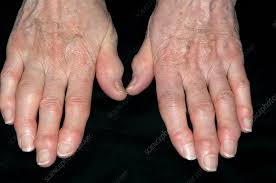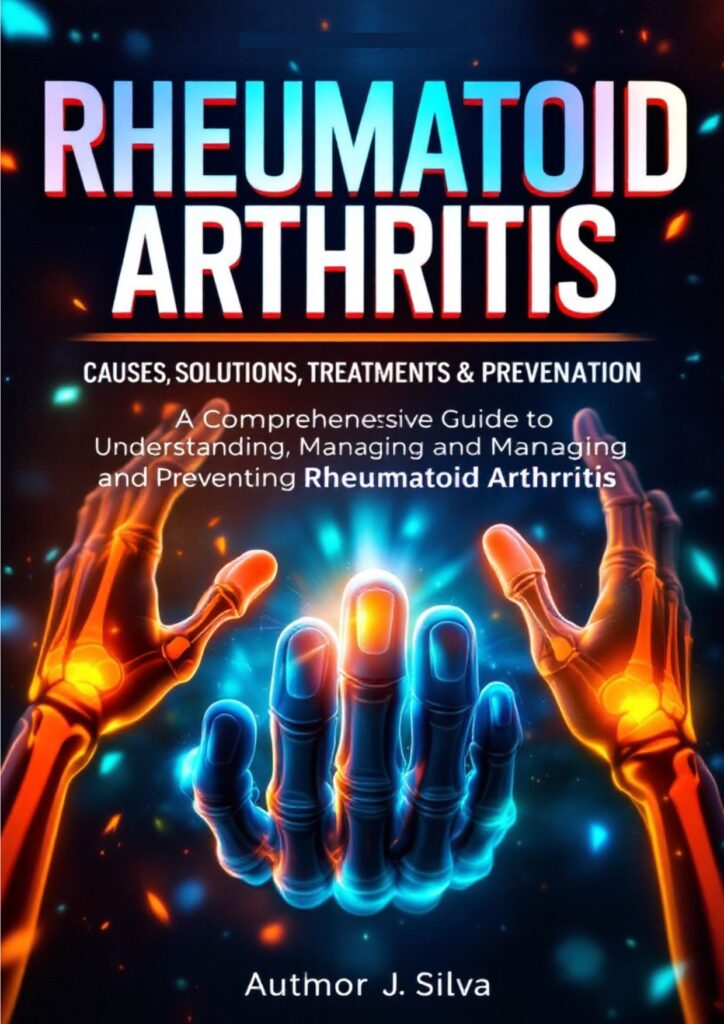
Understanding Arthritis in the Fingers
Arthritis in the fingers is one of the most common forms of joint disease that affects millions of people worldwide. It occurs when the cartilage between the finger joints wears down, causing pain, stiffness, swelling, and reduced movement. This condition can affect anyone, but it’s most prevalent among older adults, women, and people with a family history of joint disorders.

There are several types of arthritis that can affect the fingers, including:
- Osteoarthritis (degenerative joint disease)
- Rheumatoid arthritis (autoimmune disorder)
- Psoriatic arthritis (linked to psoriasis)
Each type has unique causes and symptoms, but all share one common factor — inflammation that damages joint tissues over time.
Common Causes of Arthritis in the Fingers
The causes of arthritis in the fingers can vary depending on the type of arthritis you have. Below are the most common contributing factors:

1. Genetic Predisposition
People with a family history of rheumatoid arthritis or osteoarthritis are at higher risk. Certain genes influence how your immune system reacts to joint tissue, leading to chronic inflammation.
2. Overuse and Repetitive Movements
Jobs or hobbies involving frequent use of the hands — like typing, sewing, or playing instruments — can wear down cartilage and lead to stiff finger joints and long-term joint stress.
3. Autoimmune Disorders
In conditions such as rheumatoid arthritis in the fingers, the body’s immune system mistakenly attacks its own joint lining, causing swelling, deformity, and pain, especially in the thumb and knuckles.
4. Injury or Trauma
Even minor injuries, such as fractures or dislocations, can accelerate joint wear, leading to knuckle pain in one finger or chronic stiffness.
Recognizing the Signs and Symptoms
The symptoms of arthritis in the fingers can appear gradually or suddenly. Recognizing them early can help prevent permanent damage.
Common symptoms include:
- Persistent sore finger joints
- Swelling and redness around the knuckles
- Stiff finger joints in the morning or after inactivity
- Warmth in affected areas
- Difficulty gripping or performing daily tasks
- Visible deformities, such as crooked or enlarged joints
In rheumatoid arthritis fingers, you might notice symmetrical swelling — meaning both hands are affected — and pain that worsens over time.
Types of Arthritis That Affect the Fingers
Rheumatoid Arthritis Fingers
This autoimmune condition targets the small joints of the fingers and wrists. The inflammation can cause permanent deformities and pain that limits hand movement.
Psoriatic Arthritis Fingers
Linked to the skin condition psoriasis, psoriatic arthritis causes swelling that gives fingers a sausage-like appearance. It may also lead to stiffness and nail changes.
Osteoarthritis
Known as “wear-and-tear” arthritis, it primarily affects the distal joints (those closest to the fingertips). This form can cause bony nodules and loss of flexibility.
Diagnosis and Testing for Arthritis in the Fingers

If you experience symptoms such as knuckle pain in one finger or persistent stiffness, it’s important to see a rheumatoid arthritis doctor for proper evaluation.
Diagnostic tests may include:
- X-rays to detect joint damage or bone spurs
- Blood tests to measure inflammation markers
- Rheumatoid factor (RF) and anti-CCP antibody tests to confirm rheumatoid arthritis
- MRI or ultrasound scans for detailed images of soft tissue inflammation
External Resource
Learn more about diagnostic methods from the Mayo Clinic’s guide on arthritis diagnosis.
Treatment for Rheumatoid Arthritis in Fingers
Treatment for rheumatoid arthritis in fingers focuses on managing pain, reducing inflammation, and preventing further joint damage.
Common therapies include:
- DMARDs (Disease-Modifying Antirheumatic Drugs): Slow disease progression and protect joints.
- NSAIDs: Reduce pain and swelling.
- Corticosteroids: Provide quick relief from severe inflammation.
- Physical therapy: Helps maintain flexibility and strength.
- Splints or braces: Support proper joint alignment during daily activities.
For advanced treatment options, visit the Arthritis Foundation’s guide to RA therapy.
Natural Remedies and Self-Care for Finger Arthritis
In addition to medical treatments, lifestyle changes can greatly improve joint comfort.
1. Anti-Inflammatory Diet
Include foods rich in omega-3 fatty acids (like salmon and walnuts), turmeric, and leafy greens to reduce inflammation naturally.
2. Hand Exercises and Stretching
Gentle finger stretches and hand squeezes can help maintain flexibility and prevent stiffness.
3. Heat and Cold Therapy
Applying warm compresses improves circulation, while cold packs reduce swelling and pain.
4. Supplements and Herbal Support
Supplements like JointVive can promote joint comfort and mobility by supporting cartilage health with natural ingredients.
Preventing Arthritis in the Fingers
Prevention is possible through a combination of good habits and proactive care.
Tips to prevent finger arthritis:
- Maintain a healthy weight to reduce strain on joints.
- Avoid repetitive strain activities or take regular breaks.
- Keep your hands warm in cold weather to reduce stiffness.
- Eat a nutrient-dense diet rich in antioxidants.
- Practice stress-reducing activities like yoga and meditation.
Consistent hand care can go a long way toward preventing arthritis in the fingers and maintaining lifelong mobility.
Get Your Ultimate Guide to Rheumatoid Arthritis Now!
Are you struggling with rheumatoid arthritis or worried about the early signs of RA? Don’t wait until the pain gets worse! Our comprehensive eBook, Rheumatoid Arthritis: Causes, Solutions, Treatments & Prevention, is your complete guide to understanding RA, managing symptoms, and preventing joint damage.
Inside this eBook, you’ll discover:
- Detailed explanations of rheumatoid arthritis symptoms and RA symptoms
- Proven strategies for rheumatoid arthritis treatment
- How to recognize early signs of rheumatoid arthritis before serious damage occurs
- Lifestyle tips, exercises, and diet plans for arthritis in fingers and other affected joints
- Expert advice for living a healthy, active life with RA
Don’t let rheumatoid arthritis control your life! Take the first step towards relief and empowerment.
Click here to get your eBook now!
Why you need this eBook:
- Easy-to-understand language, perfect for anyone dealing with RA
- Actionable solutions and preventive measures you can implement today
- Professional, science-backed guidance from experts in autoimmune health
Take control of your health—get your copy today and start managing your RA like a pro!
FAQ
1. What are the first signs of arthritis in the fingers?
Early symptoms include mild stiffness, tenderness, and swelling in the finger joints, especially in the morning.
2. Can arthritis in the fingers be reversed?
While there’s no cure, early diagnosis and treatment can manage symptoms effectively and prevent further joint damage.
3. Is it normal to have knuckle pain in one finger?
Occasional pain can result from overuse or minor injury, but persistent pain may indicate arthritis.
4. What’s the best treatment for rheumatoid arthritis in the fingers?
DMARDs, physical therapy, and anti-inflammatory diets are among the most effective options.
5. Can diet really help finger arthritis?
Yes — an anti-inflammatory diet can reduce joint pain and improve mobility naturally.
Conclusion
Arthritis in the fingers can be painful and limiting, but with early detection, proper treatment, and preventive care, you can maintain healthy, flexible hands. Combining medical therapies with lifestyle changes, nutrition, and supplements like JointVive can help you live more comfortably and confidently.
Stay informed, stay proactive, and protect your hands — because every movement matters.
SEE ALSO: Rheumatoid Arthritis Causes: And How to Prevent It
SEE ALSO: Rheumatoid Arthritis – E-book
SEE ALSO: Signs of Rheumatoid Arthritis: See All
Disclaimer: This article is for informational purposes only and does not replace the advice of a healthcare professional. Consult a doctor or nutritionist before starting any supplementation. Some links in the text are affiliate links, which means we may receive a commission if you make a purchase. This does not impact the price for you and helps us continue to bring you quality content.
